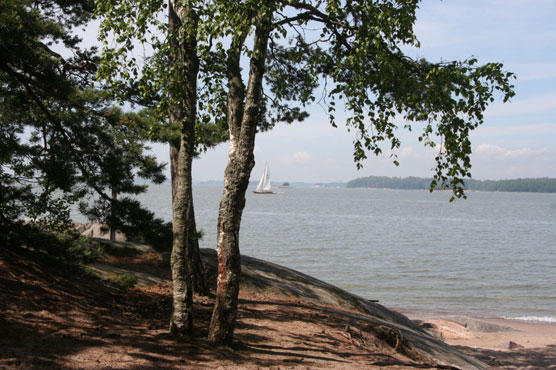Press release 2015-05-22 at 13:13

© Photo: Finnish Meteorological Institute, Elena Saltikoff
Finnish Environment Institute's and Finnish Meteorological Institute's press release 18.5.2015
The climate change has already altered the characteristics of the Baltic Sea region, reveals a recent international study. In the continuation the global warming will increasingly affect e.g. ice cover, flooding and the habitat of the region. According to the report, the worst scenario for the Baltic Sea region is worsening eutrophication situation.
The Second Assessment of Climate Change for the Baltic Sea Basin (BACC II), a recently published report, takes into consideration observed climate changes for approximately the last two hundred years as well as possible changes that might occur by the year 2100. The report serves as a revision and expansion of the 2008 edition of the BACC book. The comprehensive scientific survey includes work from 141 scientists from twelve countries. The authors include 26 Finnish scientists from eight Finnish research institutions.
Warming continues
Warming air temperature in the Baltic Sea region has already been verified, but the increase is seasonally and regionally different. The most drastic recorded increase in warming to have occurred in the northern Baltic Sea region was 1.5 degrees Celsius between 1871 and 2011 during the spring seasons. This number is well above the global warming estimates of up to one degree Celsius documented in the last IPCC report.
The simulations indicate a possible rise in surface temperatures of approximately two degrees Celsius for Baltic Sea waters—and up to four degrees Celsius in the Gulf of Bothnia. This milder climate would lead to a possible decrease in Baltic Sea ice cover by fifty to eighty percent.
A general increase in precipitation is expected, particularly in winter and a decrease of up to forty percent could occur on the southern coasts in summer. In Finland, the flooding of the rivers in the winter time will be more common, due to warmer winters. In southern parts of Finland flooding in the spring will become less frequent. A precise forecast, however, is impossible due to the range of variations between the various models.
Sea level rises
The sea level rise in the Baltic Sea is closely coupled to the global sea level. This means a possible rise of approximately thirty to eighty centimetres in the Baltic Sea region by the end of the century. This rise is superimposed, however, by geological subsidence and uplift processes. Expected rises on the southern coasts (Denmark, Germany) are expected to similarly reflect that of global predictions, but this rise is partly compensated for in the northern region by natural uplift of the landmass.
In Vaasa region, for instance, the sea level rise is compensated by the natural uplift of the landmass. On the other hand, in the Helsinki region, the natural uplift is not as remarkable as the sea level rise. Both changes will have an effect on the biodiversity of the Baltic Sea region, especially on the archipelago habitats of the Northern parts of the Baltic Sea.
Marine and land ecosystems react to changes
In addition to warming Baltic Sea waters, the expected reduction in salinity would have a considerable impact on Baltic Sea flora and fauna. The entire ecosystem, from bacteria to commercial fish species such as cod, would be affected. Some of the current species would become extinct while new ones move to the region. The Baltic Sea has already seen the arrival of several invasive species.
The change is not necessarily for worse but the alarming fact is the sensitivity of the Baltic Sea ecosystem. As the living conditions for the key species become difficult, the functioning of the whole ecosystem might change rapidly.
Worst case scenario: accelerating eutrophication
The worst threat caused by the warming climate is the run-off of nutrients which might lead to an alarming eutrophication situation on the Baltic Sea. Eutrophication is a problem which the coastal countries have tried to tackle for decades. Progress has been made, but the climate change threatens to override the advances.
As is stated in the report, precise impacts for the ecosystems of the Baltic Sea region are impossible to predict due to the range of variations between the various models. Obvious, however, is that the global warming causes significant changes on the region. This demands adaptation, not only from the nature but from the societies of the coastal countries. Efforts to restrict the emissions of greenhouse gases, which affect the pace of the changes, is crucial as well.
More information
Finnish lead authors:
Jari Haapala, Head of Unit, Finnish Meteorological Institute, firstname.lastname@fmi.fi, tel. +358 295 396 406
Markku Viitasalo, Research Professor, Finnish Environment Institute, firstname.lastname@environment.fi, tel. +358 295 251 742
Jukka Käyhkö, Professor (Geography), University of Turku, firstname.lastname@utu.fi, tel. +358 40 522 5212
Pekka Niemelä, Professor (Biology), University of Turku, firstname.lastname@utu.fi, tel. +358 500 816 707
Sirpa Rasmus, Researcher, University of Jyväskylä, firstname.lastname@jyu.fi, tel. +358 40 528 2585
Link to the report: